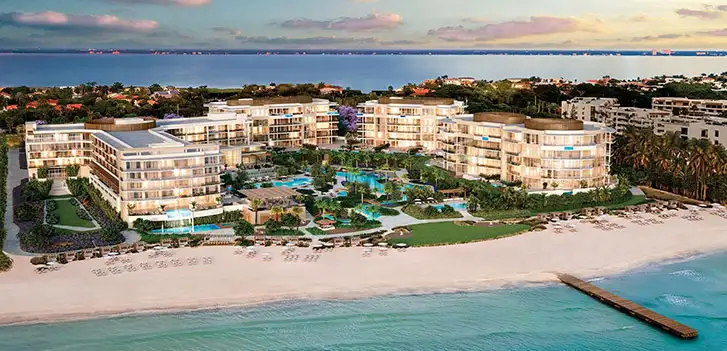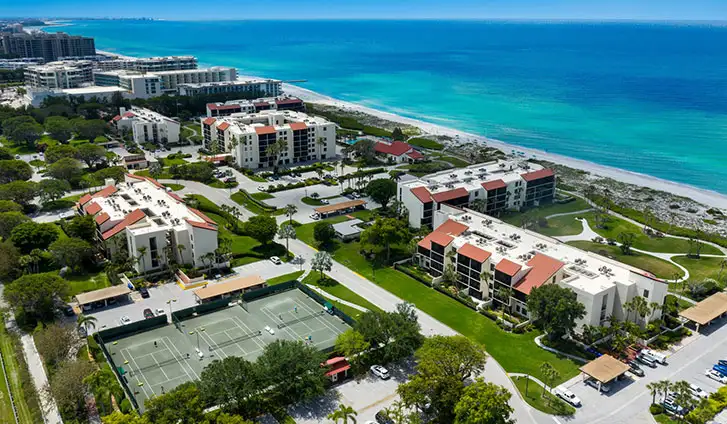After being visited by Hurricane Helene and her equally intimidating brother Milton in a two-week period, I have pointed advice for Buyers contemplating living on our barrier islands (known as Keys here in Sarasota).
The storm season of 2024 has left a path of confusion and uncertainty for some. However, with our lifetime of experience living on our beautiful keys, we can offer solid guidance on how to mitigate the risk and therefore alleviate the stress. As a place of natural beauty, pristine beaches, and vibrant arts and culture, Sarasota will continue to attract those seeking an elevated lifestyle.
For the purpose of guiding you to an informed real estate purchase on or near the water, I have distilled down to three housing choices for living on a barrier island. I’ll also incorporate some benefits and challenges of each.
Here are the options:
- Ground Floor Living with Higher Base Flood Elevation
- Elevated Living
- Condo Living
As with all things, there are trade-offs. Buyers and owners have to weigh their risk tolerance, costs, and lifestyle choices that come with each.
Option 1: Ground Floor Living with Higher Base Flood Elevation
Historically, most people favor living on the ground floor, especially in a single family, stand- alone home. Technically this is referred to as “slab-on-grade.”
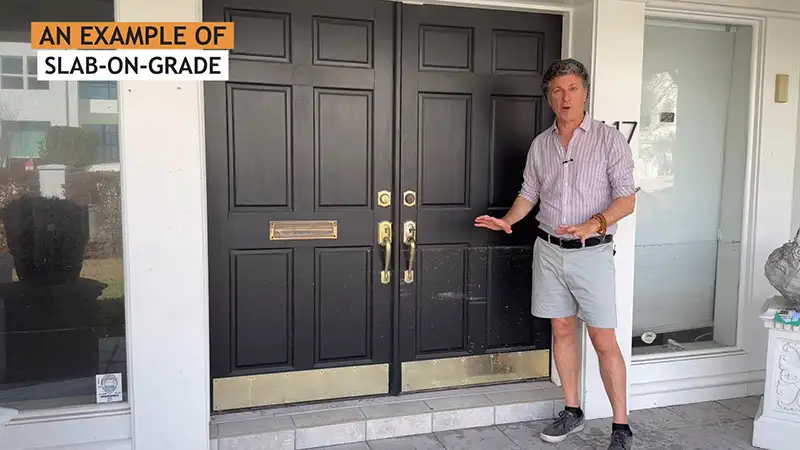
Most prefer this option because it eliminates the need for steps. Whether you have a toddler (or just entertaining one), may have someone recovering from an injury, or a family member whose mobility is less than it once was, this is the easiest form of living.
In a time when storm surges and flooding have become more frequent, this option is both going away and is more expensive to maintain. As more homes and businesses get flooded from extensive rain (or storm surge) events, insurance companies are raising the rates on this type of living. And even if one can afford the extra expense, there remains the added worry of monitoring the property during the storm season and the effort of remediating and renovating if the home has been breached.
I still believe this option is great, but there are two crucial pieces of information that buyers need to consider when assessing each property: the Base Flood Elevation (BFE) and the neighborhood’s drainage conditions, commonly referred to as “Storm Water Runoff.”
Our current home is slab on grade (which makes it step-free), yet our lot is built up and we are 16 feet above sea level. Consequently we are at a very low risk of any flooding from a rain or storm surge event.
Another very important point that needs to be taken into account is that FEMA came out with new flood maps in 2024. In the waterfront client base that we work with, we have seen that the elevations were lowered instead of raised. This does not make sense to me, especially in light of recent storm events. Whatever the new lower minimums may be, I recommend that property owners who are building new homes/buildings should plan to elevate them to at least the levels indicated on the previous flood maps. (You can access flood map info here.)
St Armands Key Case Scenario
We have a client that purchased a home on St. Armands Circle this summer of 2024. Fortunately, we negotiated their purchase at very close to lot value so the house was a bonus. They had water intrusion during Helene and Milton. Their home sits at 3½ feet above sea level. While they were originally intending to renovate in the short term and build new down the road, they have now decided to tear down and rebuild immediately. The most current FEMA flood map says that they have to build 8 feet above sea level. Let’s say they had 3 feet of water in their current home (they had a bit less) and we know they are 3 ½ feet above sea level, in my opinion 8 feet is a little too close to the 6 ½ feet of storm surge, so I am suggesting they should build at least 10 feet above sea level and preferably 11-13 feet.
Again, If I were to build new, I would go with the former FEMA flood map designations, which aim for a higher base flood elevation, especially after our experiences August-October 2024. This is another form of insurance called “Peace-of-Mind.”
My guidance here is that buyers should be able to get some good opportunities to buy slab on grade on our Keys this fall, winter, and spring. Buyers should go into any such purchase with their eyes wide open to understand the potential benefits and tradeoffs. If building your own brand-new home is the goal, this may be a window to get property closer to land value and then build to current codes to mitigate future risk.
Option II: Elevated Living
The second option for buyers on the barrier islands such as Lido, Siesta, St Armands, Longboat, or Bird Key is to purchase a home that was built after FEMA flood maps were incorporated in the local building code during the 1980s. This requires that any new construction be built at or above the designated elevation.
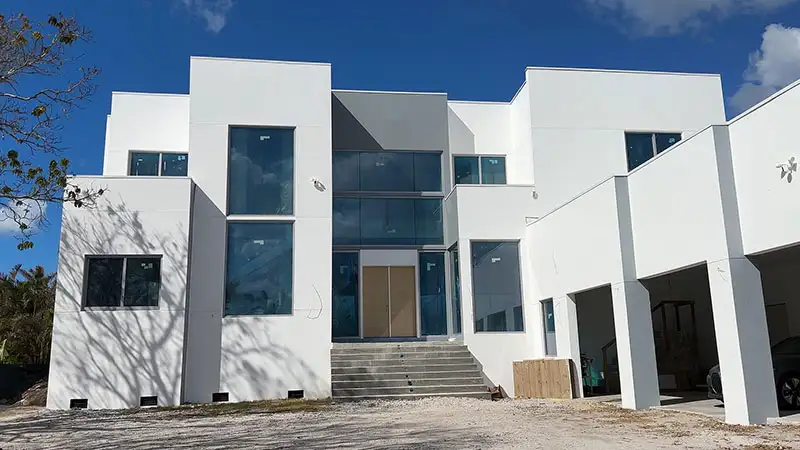
Homes can be elevated three ways:
- PIERS. Some houses (especially those built in the 1980s) were erected on visible piers. The garage is on the ground and the living space is elevated into the air. In many cases, it is conceivable to see the underside of the structure from one side to another. A short time later some of these piers were framed in so that they were no longer visible.
- FILL DIRT. A second way to elevate a home is to bring in fill dirt. This raises the level of the lot (almost like a small hill or ant mound). This can elevate a home up a few feet but has its limits especially in an already established neighborhood.
- STEM WALL. A stem wall, constructed of concrete block, creates a box similar to a sand box with raised edges or sides that are perpendicular to the ground. The box (stem wall) is then filled-in with dirt, packed down, and the slab is built on top of it.
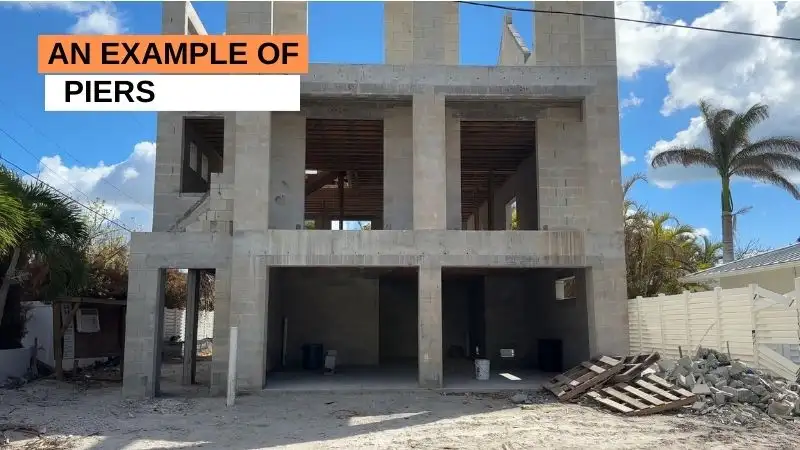
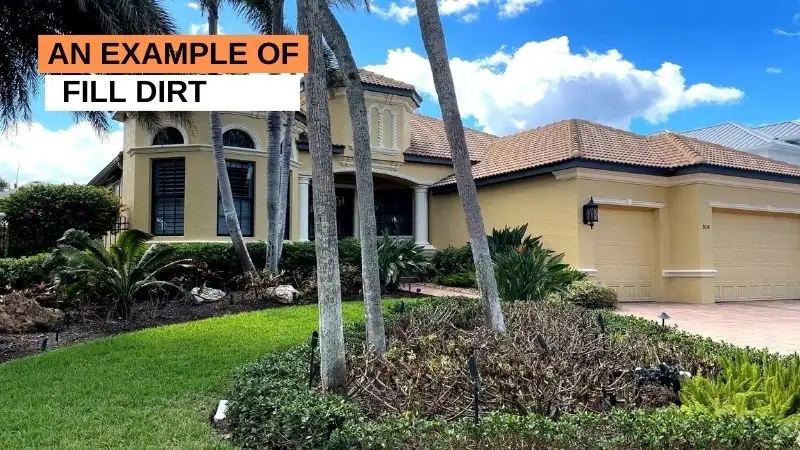
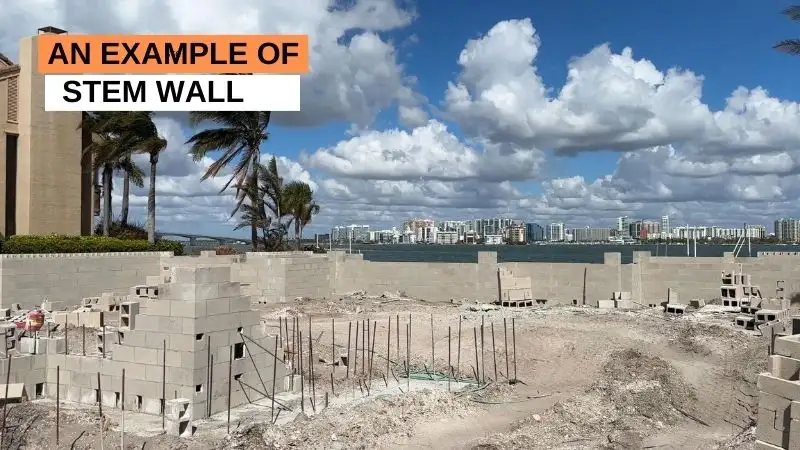
The most common building style today on the barrier islands employs a combination of the above methods (with the considerations of building codes/covenants to maintain legal compliance and aesthetic) to reach the desired minimum elevation. There are steps to get up to the main living areas. The annual flood insurance cost will be less than slab on grade and storm stress should be reduced and preferably alleviated.
Siesta Key Case Study
We have clients who purchased new waterfront construction (a decade ago) on land that was designated to have a BFE of 10 feet. (Note: Under the 2024 floor maps it was redesignated from 10 feet to 8 feet. Meaning that the 1st level of living space only needs to be 8 feet above sea level). They did not have any water intrusion issues. The point here is that purchasing within the framework described here as Option II (regardless of pre/post 2024 FEMA flood maps) will take a home off of the ground and elevate it. At a minimum it raises the main living level (or first floor of living space) up to FEMA’s designated minimum at the time of building.
Elevated properties did not experience water intrusion inside the main living areas of the home. They may have had storm surge in their garage if it was at a flood elevation lower than the storm surge. Homes that have elevator wells may also have experienced flooding as they may sit below grade.
Option III: Condo Living
Living in a condo may provide the greatest “peace-of-mind,” both during storm events as well as for everyday living. Condominium living is not for everyone as owners give up their personal space outside of their walls. However, there are three compelling drivers in favor of this option:
- SETTING. Condominiums typically have prime waterfront locations at a more affordable/attainable budget than if one were to purchase a home in the same setting.
- MAINTENANCE FREE. Condominiums provide comprehensive care (management) to for everything outside of your walls.
- TURN-KEY. The best part of the condominium experience is the concept of “turn-key.” When you leave for any period of time, you get to just turn the key (i.e., lock the door) and leave. Your home in the sky, amenities and grounds will be there when you return just as when you left.
If this type of lifestyle is the right match, it may be one of the safest and easiest ways to be free from the stress of storm surge and severe weather events. There are also new statutes in Florida to ensure that all condominium communities are adequately funded for structural integrity as well as planned and unplanned improvements and renovations.
Most condominium properties, both older and newer buildings, remained unharmed during the hurricane events. The problems only arose on the ground floor areas of some buildings if they sat at a lower flood elevation. The ground floor may be the area designated for garages/carports, the common spaces for the community, or in a few cases there may be ground floor residences. All this is very specific to the individual buildings, so all these are talking points when we work with our buyers so they are aware of the risk factors.
NEW CONSTRUCTION CONDOS Offer the Ultimate Sense of Security
Mitigating against damage by natural weather events involves protecting from storm surge, heavy rains, and wind. Buying new construction is a very attractive option as the roof is new, all glass must be impact resistant, and the elevation has to comply to the most recent and strictest building codes.
Contractors and manufacturers are constantly learning from each weather event and improving their methods with each iteration for the best possible outcome. For example, some of the units in the Ritz Carlton Residences at The Quay in Downtown Sarasota (completed in 2021) experienced water intrusion in prior storms due to poor installation of windows — the windows themselves did not fail but water came through between the edge of the window and the wall. That same contractor, Moss Construction, must have learned their lesson because in their newly completed project at the St Regis Residences Longboat Key, the units did not have any water intrusion even though the winds were stronger.
Longboat Key Case Studies
ST REGIS RESIDENCES
We have a client at the St Regis Residences on Longboat Key (completed fall 2024) who closed on his unit just prior to the two hurricane events this fall. When we checked in with him he had no concerns about his unit as he lives on the fourth floor, has hurricane impact windows, and whatever would happen to the grounds would be taken care of by the management. After the fact, the most work any resident had to do was to clean the sea spray off the 10’ sliding glass doors. Even the garages did not experience water intrusion from the storm surge because the St Regis had elevated the land even under the garage.
We understand that not everyone can afford the St Regis, but this is an example of an experience many condo owners had on the island. There are actually many well-funded condominiums who are consistently having inspections by engineers and strengthening their buildings so that their residences are unaffected by the storms.
SEAPLACE
Seaplace is a condominium complex built in 1974 on Longboat Key. Our clients purchased a “starter” condominium in 2022. They did a complete renovation which included Miami-Dade rated, hurricane impact windows and doors. The property sits on over 2000 feet of direct Gulf Front. Their residence on the 5th floor looks out onto the beach. When they returned to the island it was just as they left it. The husband was pleasantly surprised as the 43 acres of grounds were completely clear and in pristine form just two weeks after the two storms. The buildings and their residence were fine which is the result of their improvements AND the management and homeowners relentless dedication “to maintain the quality and safety of the community.” The most recent structural assessment was conducted in 2023 as required by Florida Statute.
Amongst those who currently live here, it is not apparent if the events of late September/early October will cause owners to make a change or opt to stay put. It also may take some time for prospective new residents of Sarasota to reconsider their search and lifestyle criteria.
As we move forward through the 4th quarter of 2024 and into January of 2025, I feel that there will be some good options, though I am not sure about how many deals we will see as we wait to see if owners become sellers.
Why You Should Choose your Agent Wisely
We are very committed to the long-term relationship with each of our clients. As such we invest a lot of time honing in on where you will find your happiness as well as ensuring you are well educated and informed about the trade-offs of each choice you have to make. Deciding on the location and property is one part of the equation. To protect your interests, we guide you through the entire process from negotiations, contracts, multiple inspections, insurance, and closing. When you partner with our local Real Estate Agency you are ensured the benefit of our intelligence and our unwavering integrity.
We have extensive lifelong experience in this region and industry, along with a strong network of resources to provide you with support from top professionals throughout your journey to purchase and enjoy the exceptional lifestyle that Sarasota offers. If you have any questions about the Sarasota Real Estate market, call us @ 941.587.0740.
